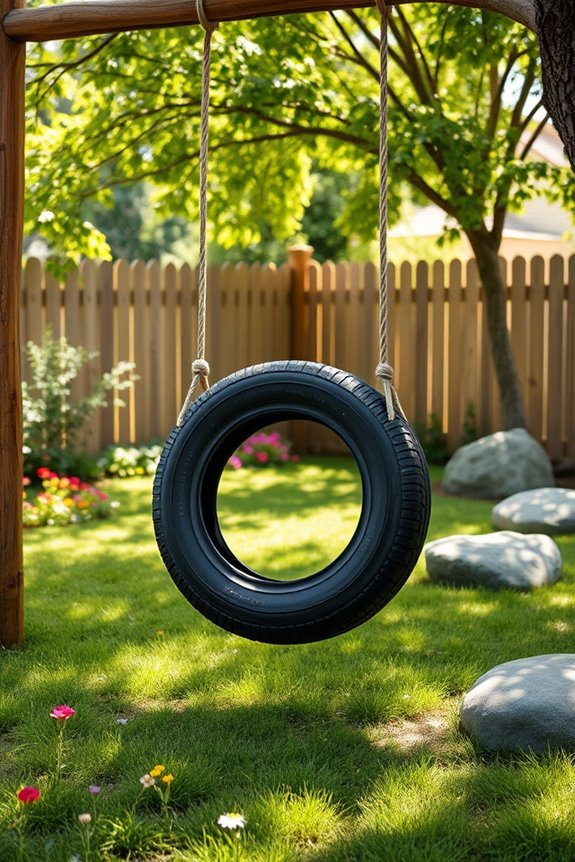What Is a Flex Pipe? Uses and Advantages in Plumbing and Exhaust Systems
A flex pipe is an essential component in plumbing and exhaust systems, specifically engineered to absorb movement and vibrations. Constructed from durable materials like stainless steel and rubber, flex pipes effectively prevent damage from thermal expansion and mechanical stress, ensuring secure connections and minimizing leaks. They are commonly found in automotive exhaust systems and residential plumbing. Understanding their construction and applications can help you make informed decisions about their use in your projects.
Definition of a Flex Pipe

A flex pipe, or flexible pipe, is a plumbing or exhaust component designed to handle movement and vibrations.
Made from materials like stainless steel or reinforced rubber, flex pipes absorb shocks and prevent damage from thermal expansion or mechanical stress.
They are crucial for maintaining the integrity of plumbing and exhaust systems, ensuring secure joints and minimizing leaks.
Flex pipes are versatile, suitable for applications in automotive exhaust systems and residential plumbing.
Types of Flex Pipes
When selecting the right flex pipe for your project, it’s important to consider the specific application. Here are the main types of flex pipes and their uses:
- Exhaust Flex Pipes: Designed for automotive use, these pipes absorb vibrations and accommodate engine movement, ensuring a smooth exhaust flow.
- Gas Flex Pipes: Perfect for gas supply lines, they provide flexibility during installation while ensuring the integrity of the gas system.
- Drainage Flex Pipes: Used in drainage systems, they navigate complex layouts without hindering flow, making them ideal for tight spaces.
- Water Supply Flex Pipes: These pipes connect plumbing fixtures, allowing for easy adjustments and installations.
Choosing the appropriate type enhances functionality and reliability in your plumbing or exhaust system.
Materials Used in Flex Pipes
Flex pipes are typically made from materials like stainless steel, rubber, and silicone, each offering unique benefits.
Stainless steel is known for its durability and corrosion resistance, making it ideal for exhaust systems.
Rubber provides flexibility and vibration absorption, suitable for plumbing applications.
Silicone is temperature-resistant, perfect for high-heat environments.
Choosing the right material depends on your specific plumbing or exhaust needs, ensuring optimal performance and longevity.
Common Flex Pipe Materials
When choosing flex pipes for plumbing or exhaust systems, consider the following common materials, each with distinct advantages:
- Stainless Steel: Highly durable and resistant to corrosion, making it perfect for exhaust systems.
- Aluminum: Lightweight and rust-resistant, ideal for automotive applications to enhance performance.
- Rubber: Offers flexibility and vibration absorption, commonly used in plumbing systems.
- PVC: Cost-effective and easy to install, frequently utilized in drainage and venting systems.
Select the material based on your specific application needs for optimal performance and longevity.
Benefits of Material Choices
When selecting materials for flex pipes, it’s crucial to understand the specific benefits each option offers for plumbing and exhaust systems:
- Stainless Steel: Known for its durability and corrosion resistance, it’s ideal for high-temperature exhaust applications.
- Rubber Flex Pipes: They provide flexibility and ease of installation, making them perfect for plumbing systems with limited space.
- PVC Flex Pipes: Lightweight and chemical-resistant, these are suitable for various drainage applications.
Choosing the right material impacts the system’s performance and longevity.
Construction of Flex Pipes

Flex pipes are designed with specific materials that ensure flexibility and durability, making them ideal for plumbing and exhaust applications.
Their key design features enhance performance and simplify installation.
Understanding these aspects helps users appreciate the advantages flex pipes provide in various settings.
Materials Used in Construction
Flex pipes are essential components in plumbing and exhaust systems, made from specific materials that optimize performance.
The most commonly used materials include:
- Stainless Steel: Offers strength and corrosion resistance, making it ideal for high-temperature applications.
- Aluminum: Lightweight and rust-resistant, perfect for automotive exhaust systems.
- Rubber: Provides flexibility and absorbs vibrations, commonly used in connections and joints.
- Composite Materials: Combine different substances for enhanced thermal resistance or reduced weight.
These materials ensure flex pipes are durable, flexible, and capable of withstanding challenging conditions.
Design Features and Benefits
Flex pipes offer essential features that significantly enhance their functionality in plumbing and exhaust systems. These pipes are designed with a corrugated surface, enabling flexibility and movement for various installations. They are constructed from materials that resist corrosion and can withstand high temperatures, ensuring long-lasting performance. Additionally, flex pipes help reduce vibration and noise, leading to a quieter operation.
| Feature | Benefit |
|---|---|
| Corrugated Design | Provides flexibility |
| Corrosion Resistance | Extends lifespan |
| High-Temperature Tolerance | Ideal for exhaust systems |
| Vibration Dampening | Lowers noise and stress |
These features make flex pipes a reliable choice for efficient plumbing and exhaust solutions.
Common Applications in Plumbing
Flexible pipes are crucial in plumbing systems as they connect various components while accommodating movement and vibrations.
Here are some common applications:
- Water Supply Lines: They connect rigid pipes to fixtures, offering flexibility during installation.
- Drainage Systems: Flexible pipes adjust to tight spaces or uneven surfaces for effective drainage.
- Heating Systems: They facilitate connections in hydronic heating systems and handle thermal expansion.
- Seismic Resilience: These pipes enhance plumbing systems’ capacity to absorb shocks during seismic events.
Understanding these applications can help you make informed decisions when selecting plumbing materials for your projects.
Common Applications in Exhaust Systems
Flex pipes are essential components in exhaust systems across automotive, industrial, and marine applications.
In automotive systems, they help absorb engine vibrations and allow for thermal expansion, which improves the system’s durability and performance.
In industrial and marine settings, flex pipes manage movement and minimize stress on exhaust parts, ensuring efficient operation.
If you’re looking for ways to enhance your exhaust system’s efficiency and longevity, considering flex pipes is a key step.
Automotive Exhaust Systems
Flex pipes are crucial for an efficient automotive exhaust system, as they effectively manage engine movement and vibration. Here’s how they help:
- Vibration Dampening: They absorb engine vibrations, protecting rigid components from damage.
- Misalignment Compensation: Flex pipes adjust to engine torque movements, ensuring proper exhaust flow.
- Prevention of Exhaust Leaks: Their flexibility maintains a tight seal, minimizing the risk of leaks.
- Durability: Quality flex pipes endure extreme temperatures and harsh conditions, prolonging the exhaust system’s lifespan.
If you’re experiencing exhaust issues, consider checking the flex pipes for optimal performance.
Industrial Applications
Flex pipes are essential components in industrial exhaust systems, particularly in applications like power plants, manufacturing facilities, and chemical processing plants. They enhance performance by accommodating movement and vibration, ensuring a tight seal in high-temperature environments.
Here’s a quick overview of flex pipe applications and their benefits:
| Application | Benefits | Considerations |
|---|---|---|
| Power Plants | Increases efficiency | Requires regular maintenance |
| Manufacturing | Minimizes noise and vibration | Ensure material compatibility |
| Chemical Processing | Prevents corrosion and leaks | Must resist harsh chemicals |
| Waste Management | Improves air quality | Must comply with regulations |
Marine Exhaust Systems
Marine exhaust systems are crucial for controlling emissions in watercraft like pleasure boats, commercial vessels, and fishing boats.
One key component of these systems is flex pipes, which provide several benefits:
- Flexibility: Flex pipes allow for engine movement and vibrations without damaging the exhaust system.
- Corrosion Resistance: Made from materials that withstand the tough marine environment, ensuring durability.
- Noise Reduction: They help to lower engine noise, improving onboard comfort.
- Ease of Installation: Flex pipes make connecting exhaust components simpler, saving installation time.
These features enhance the performance and longevity of marine exhaust systems, making them essential for efficient boat operation.
Advantages of Using Flex Pipes
Flex pipes are an excellent choice for plumbing and exhaust systems due to their flexibility and ease of installation.
They can easily bend to navigate around obstacles, which reduces the need for additional fittings and minimizes leak risks. Their design allows them to absorb vibrations and thermal expansion, enhancing durability.
Additionally, flex pipes are lighter than rigid options, making them easier to handle and install. They also offer cost savings by requiring less labor and material.
With corrosion resistance that extends their lifespan, flex pipes are a reliable solution for both residential and commercial applications.
Their versatility makes them ideal for various setups.
Flex Pipes vs. Rigid Pipes
When deciding between flex pipes and rigid pipes, it’s essential to consider flexibility, installation ease, and durability.
Flex pipes are adaptable and allow for quicker installation, making them ideal for tight spaces.
In contrast, rigid pipes are known for their strength and longevity, providing a more durable solution.
Understanding these differences will help you choose the right option for your plumbing or exhaust needs.
Flexibility and Movement
Flex pipes offer significant advantages over rigid pipes in plumbing and exhaust systems, particularly in accommodating movement and vibrations.
Here are the key benefits that make flex pipes a preferred choice:
- Vibration Absorption: They effectively reduce noise and wear caused by engine vibrations.
- Ease of Installation: Flex pipes can navigate around obstacles with ease, simplifying the installation process.
- Thermal Expansion: They can expand and contract without sustaining damage, providing longevity.
- Durability: Their flexibility minimizes stress on joints and fittings, enhancing overall lifespan.
These features make flex pipes a smart alternative for various plumbing and exhaust applications, especially in tight or complex spaces.
Installation Ease and Speed
When considering plumbing and exhaust installations, the speed and ease of installation are crucial for staying on schedule and controlling costs. Flex pipes stand out as a superior choice compared to rigid pipes due to their lightweight and flexible design. This allows for quicker handling and adjustments, reducing the need for specialized tools and leading to faster project completion.
Here’s a quick comparison:
| Feature | Flex Pipes | Rigid Pipes |
|---|---|---|
| Installation Time | Shorter | Longer |
| Tool Requirement | Minimal | Extensive |
| Adjustability | High | Low |
| Labor Costs | Reduced | Increased |
| Complexity | Simple | Complicated |
Choosing flex pipes can streamline your plumbing and exhaust projects, ultimately saving time and reducing labor costs.
Durability and Longevity
When choosing between flex pipes and rigid pipes for plumbing and exhaust systems, durability is key.
Flex Pipes:
- Made typically from stainless steel, they handle vibrations and thermal expansion well, reducing the risk of cracking or breaking.
- Their flexibility allows them to absorb stress without damage, making them ideal for dynamic environments.
- They usually require less frequent maintenance and inspections.
Rigid Pipes:
- Often constructed from materials like PVC, copper, or cast iron, rigid pipes offer greater strength and resistance to external damage.
- However, they can be more vulnerable to environmental factors.
In summary, if your project needs flexibility and lower maintenance, opt for flex pipes.
For maximum strength and durability, choose rigid pipes. Assess your specific project requirements to make the best choice.
Installation Process for Flex Pipes
To ensure the effectiveness and longevity of flex pipes in plumbing and exhaust systems, follow these essential installation steps:
- Clean the Area: Begin by removing any debris to achieve a tight fit.
- Cut the Pipe: Use appropriate tools to cut the flex pipe to the required length, avoiding sharp edges that could lead to leaks.
- Align the Ends: Ensure the ends of the pipe are properly aligned with the fittings or connectors, avoiding any twists or kinks.
- Secure Connections: Use clamps or brackets to secure the connections, tightening them adequately to prevent movement.
- Inspect the Installation: Conduct a thorough inspection for misalignments or leaks before putting the system into operation.
Following these steps will help ensure a reliable installation of your flex pipes.
Maintenance of Flex Pipes
Regular maintenance of flex pipes is crucial for optimal performance and avoiding expensive repairs.
Here are key practices to ensure their longevity:
- Inspect Regularly: Check for wear, corrosion, or damage to ensure functionality.
- Clean Properly: Remove debris to prevent blockages that can impair performance.
- Secure Connections: Ensure all connections are tight to avoid leaks and maintain flow.
- Monitor Temperature: Watch for excessive heat, which can cause deterioration.
Implementing these steps will help maintain the integrity of your flex pipes and enhance their efficiency.
Potential Issues With Flex Pipes

Flex pipes are popular for their versatility and ease of installation, but they can face several issues over time.
One key concern is wear and tear in high-temperature environments, which can lead to material degradation and leaks.
Additionally, improper support during installation may cause sagging or misalignment, creating stress points that weaken their structure.
Corrosion is another risk, especially in the presence of moisture or harsh chemicals.
To prevent these problems, regular inspections are crucial to ensure the continued performance of flex pipes and to address any potential issues before they escalate.
Regulatory Standards for Flex Pipes
When searching for information on flex pipe regulatory standards, it’s important to understand their key components that ensure safety and performance in plumbing and exhaust systems. Here’s a concise overview:
- Material Specifications: Flex pipes must be made from durable, corrosion-resistant materials to ensure longevity.
- Pressure Ratings: The standards define the maximum pressure that flex pipes can safely handle, preventing failures.
- Temperature Limits: They specify the safe operating temperature range for flex pipes.
- Testing Protocols: Rigorous testing is required to confirm compliance with safety standards.
Following these regulations helps reduce risks related to leaks and failures, ensuring reliable flex pipe applications across various industries.
Compliance is crucial for manufacturers and consumers alike to achieve optimal performance.
Cost Considerations for Flex Pipes
When considering the costs of flex pipes, focus on the following key factors:
- Material Quality: Stainless steel is typically more expensive than aluminum or rubber. Choose based on your budget and application needs.
- Size: The length and diameter of the pipe affect the price. Larger or longer pipes require more material, increasing costs.
- Installation: Simple installations are more cost-effective. Complex setups may require additional labor, impacting overall expenses.
- Supplier Comparison: Prices can vary across suppliers, so it’s wise to compare options to find the best deal.
Environmental Impact of Flex Pipes
When considering flex pipes for your plumbing or exhaust system, it’s important to understand their environmental impact. Here are key points to keep in mind:
- Resource Depletion: The production of flex pipes involves natural resources, which can lead to habitat destruction.
- Waste Generation: Many flex pipes are not recyclable and can contribute to landfill waste if not disposed of properly.
- Emissions: The manufacturing process generates greenhouse gases, impacting climate change.
- Durability: Flex pipes may have a shorter lifespan compared to traditional materials, resulting in more frequent replacements.
Future Trends in Flex Pipe Technology
Flex pipes are evolving to address environmental concerns and enhance performance. Manufacturers are now using sustainable materials, such as recycled metals and eco-friendly polymers, to minimize their carbon footprint.
Advanced techniques like 3D printing and precision welding are improving durability and efficiency, making flex pipes better suited for plumbing and exhaust systems. Additionally, smart technology integration allows for real-time monitoring, helping to prevent leaks and failures.
As regulations become stricter, the focus will shift towards creating lightweight yet strong designs that comply with new standards. These advancements promise a future where flex pipes are both eco-friendly and technologically sophisticated.
Conclusion
Flex pipes are essential components in plumbing and exhaust systems, known for their adaptability and straightforward installation. They are designed to accommodate movement and vibrations, making them ideal for various applications. Despite concerns about their durability, modern advancements in materials have significantly improved their lifespan and performance. As industries evolve, the demand for flex pipes is likely to increase, leading to more efficient and eco-friendly solutions. If you’re looking for a flexible and reliable option for your plumbing or exhaust needs, flex pipes are a smart choice.





